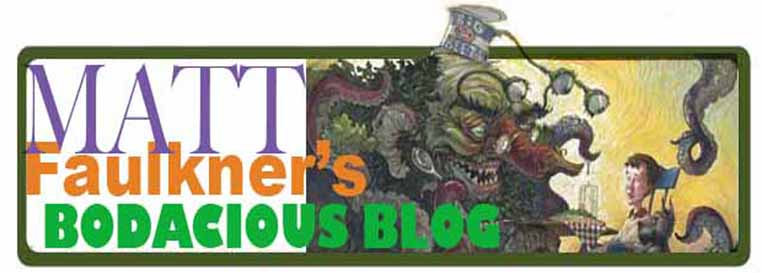A recipe for a heart healthy tea.
So, after being released from the hospital following my tutorial on heart maintenance, I had to review the foods I'd been eating- in particular the various "healthy" teas I've been drinking. Now, much of what is in these teas appears to me to be pretty darn healthy… for the most part. But, as one of the nurses whispered to me during my heart adventure "These days, it's important to be your own doctor." So, if you're like me, you start noticing the stuff that can make a heart beat skip, literally. For instance, "stevia" for those who can tolerate it, is a great, sweet plant which can be used as a wonderful sugar alternative. Those who can't tolerate it learn soon enough that stevia acts as a "vasodilator", meaning that it has the propensity to cause heart palpitations, heart arrhythmia, tachycardia (rapid heartbeat), chest pain, etc.. My first reaction to news like this regarding something like stevia that has been very helpful to me is "No way! Not stevia! It's natural! And I like it!". After I calm down, I get busy getting educated. What I found in doing some online searches of the various organic teas that listed "natural flavors" in their ingredients is that stevia is often part of this list. I also found that many of these companies don't want us to know what's in their "natural flavors". I think it's fascinating that companies that seem to espouse a "healthy life style" would list something as mysterious as "natural flavors" in its ingredients and then make it difficult to find out what those natural flavors actually are. One company posted that they would only share the contents of their natural flavors to a doctor who sent them a letter requesting such. Ah well.
So where does a tea drinker go from here?
Back to the beginning. I found a great tea recipe back in the 1980's. It's simply called "Yogi Tea" and I found it in a Kundilini yoga center. It has very low amounts of caffeine, great nutritional value and, to me, it tastes great. Also, it makes the house smell like Christmas or maybe Bilbo's pantry. Whatever. The only down side is it requires some work. If you like the sound of the recipe below, you'll need to find a place that sells bulk herbs and then go buy some. That's the hard part, I guess. Then you have to boil some water and steep the herbs in it for a while. For a guy who is used to grabbing a teabag and getting busy drinking my tea, this can be tedious. But it's so rewarding. I'm drinking some right now and it's great!
Good luck with your Yogi Tea!
"Yogi Tea"
from the 3HO Kundalini Center in Brooklyn, NY.
• Black pepper: blood purifier
• Cardamom pods: digestive aid
• Cloves: beneficial to the nervous system
• Cinnamon: strengthens the bones
• Ginger root: healing for colds and flu, increases energy
• Anise seed: a very good source of Iron and Manganese
• Fennel: very good source Vitamin C, Folate, Potassium and Manganese
• Bancha tea: Bancha- a Japanese green tea that provides antioxidant benefits. Antioxidants help reduce cell-damage caused by free radicals. Bad free radicals, bad! The National Institutes of Health says that Bancha may help in reducing risk for Parkinson’s disease, low blood pressure and decreasing blood cholesterol levels.
Milk in the tea helps in the easy assimilation of spices.
Ingredients:
For each cup:
10 ounces of water (about 1 1/3 cups)
3 whole cloves
4 whole green cardamom pods, cracked
4 whole black peppercorns
½ t-spoon anise seed
½ t-spoon fennel
½ stick cinnamon
¼ teaspoon black tea
½ cup milk
2 slices fresh ginger root
Cooking Instructions:
Bring water to a boil and add spices. Cover and boil 15 to 20 minutes. Let sit for a few minutes, then add the milk and return to a boil. Don’t let it boil over. When it reaches a boil, remove immediately from heat, strain, and sweeten with honey, if desired.
So where does a tea drinker go from here?
Back to the beginning. I found a great tea recipe back in the 1980's. It's simply called "Yogi Tea" and I found it in a Kundilini yoga center. It has very low amounts of caffeine, great nutritional value and, to me, it tastes great. Also, it makes the house smell like Christmas or maybe Bilbo's pantry. Whatever. The only down side is it requires some work. If you like the sound of the recipe below, you'll need to find a place that sells bulk herbs and then go buy some. That's the hard part, I guess. Then you have to boil some water and steep the herbs in it for a while. For a guy who is used to grabbing a teabag and getting busy drinking my tea, this can be tedious. But it's so rewarding. I'm drinking some right now and it's great!
Good luck with your Yogi Tea!
"Yogi Tea"
from the 3HO Kundalini Center in Brooklyn, NY.
• Black pepper: blood purifier
• Cardamom pods: digestive aid
• Cloves: beneficial to the nervous system
• Cinnamon: strengthens the bones
• Ginger root: healing for colds and flu, increases energy
• Anise seed: a very good source of Iron and Manganese
• Fennel: very good source Vitamin C, Folate, Potassium and Manganese
• Bancha tea: Bancha- a Japanese green tea that provides antioxidant benefits. Antioxidants help reduce cell-damage caused by free radicals. Bad free radicals, bad! The National Institutes of Health says that Bancha may help in reducing risk for Parkinson’s disease, low blood pressure and decreasing blood cholesterol levels.
Milk in the tea helps in the easy assimilation of spices.
Ingredients:
For each cup:
10 ounces of water (about 1 1/3 cups)
3 whole cloves
4 whole green cardamom pods, cracked
4 whole black peppercorns
½ t-spoon anise seed
½ t-spoon fennel
½ stick cinnamon
¼ teaspoon black tea
½ cup milk
2 slices fresh ginger root
Cooking Instructions:
Bring water to a boil and add spices. Cover and boil 15 to 20 minutes. Let sit for a few minutes, then add the milk and return to a boil. Don’t let it boil over. When it reaches a boil, remove immediately from heat, strain, and sweeten with honey, if desired.



No comments:
Post a Comment